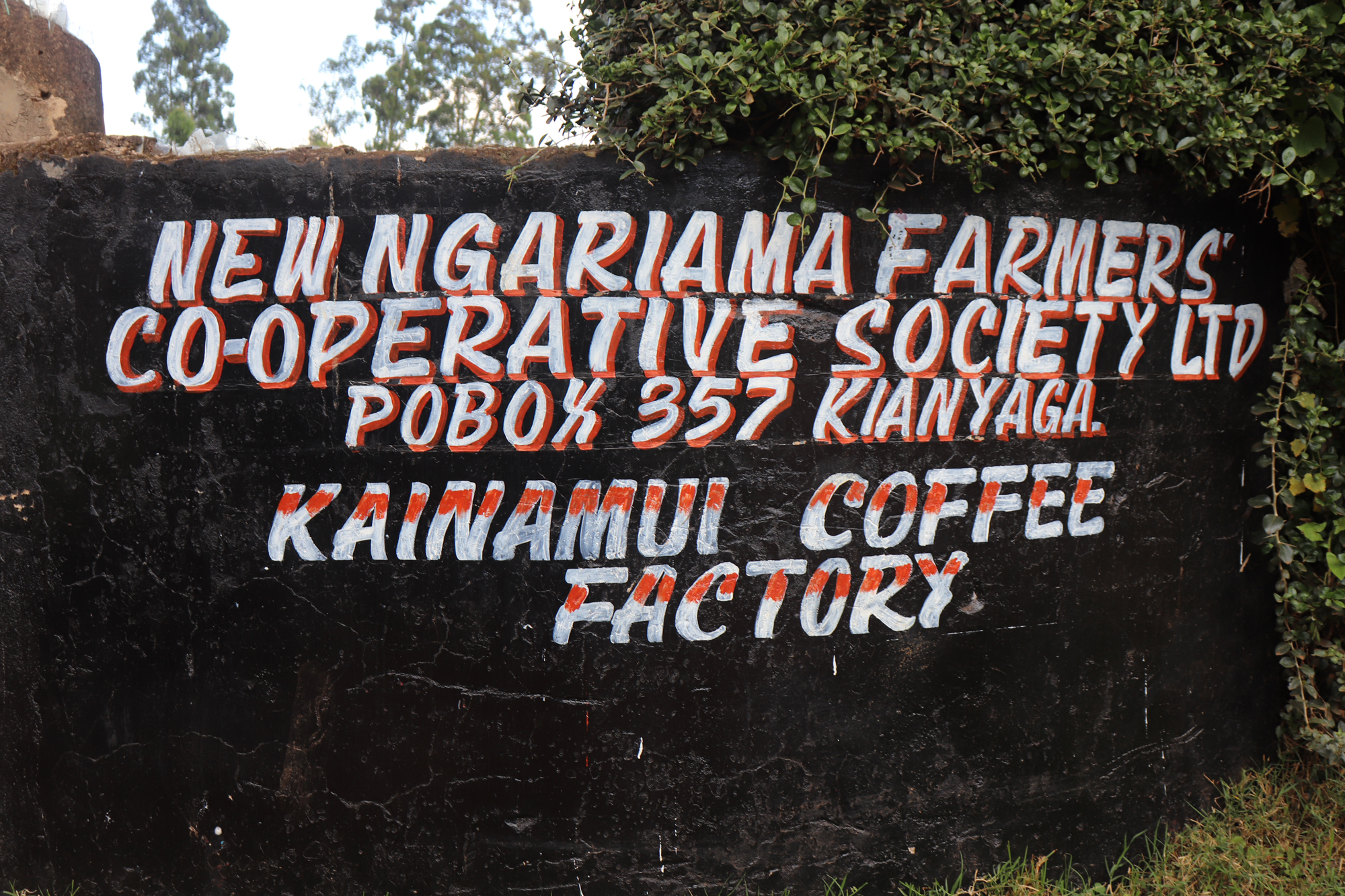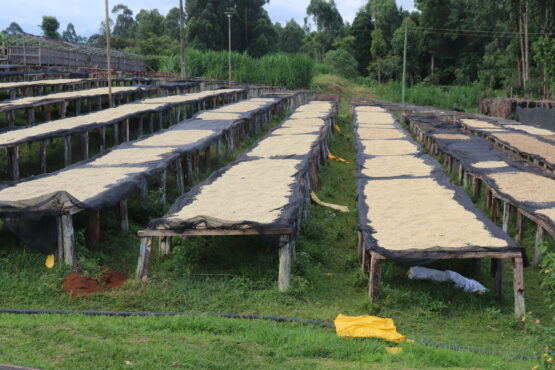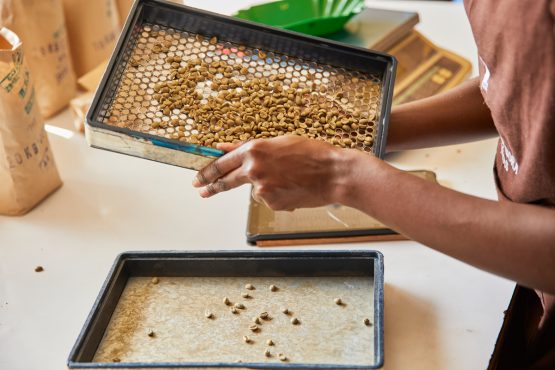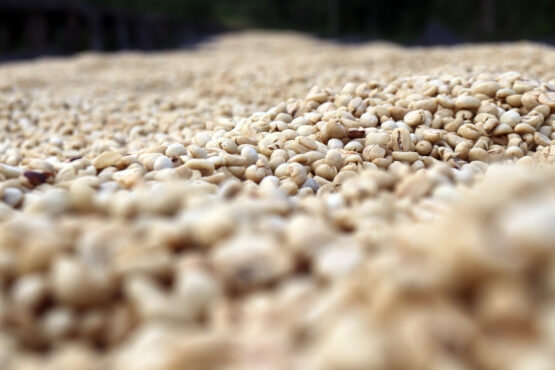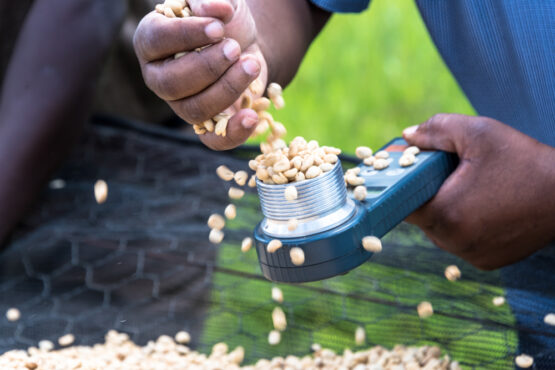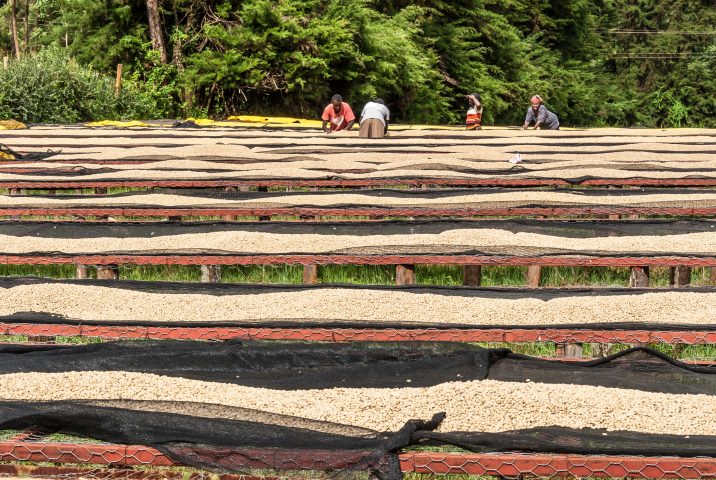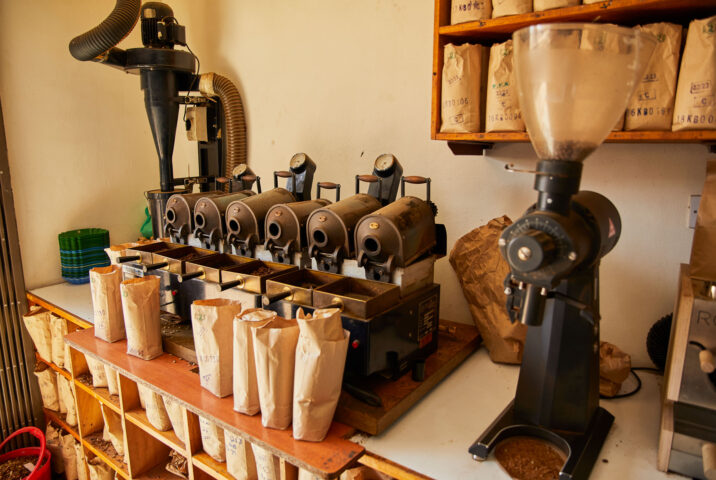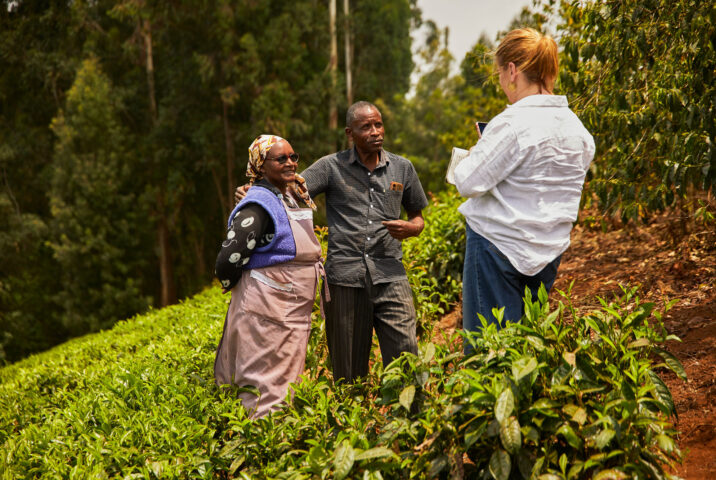Kainamui AB
Great clarity and structure. Pink berries, ruby grapefruit and lime, with a juicy body and long finish.
Kainamui is a washing station (or factory, as they are called in Kenya) located in Kenya’s Kirinyaga County. Established in 1963, the factory is one of three active sites owned by the New Ngariama Coffee Farmers’ Cooperative Society (FCS).
Kainamui receives coffee cherries from around 2,000 of the cooperative’s members (1,200 male, 800 female), who grow coffee trees under shade on nearby farms, located between 1,600-1,800 meters above sea level. On average, farmers who deliver to Kainamui have less than half a hectare of coffee (around 200 trees), which is grown alongside bananas, macadamias, maize, tea and eucalyptus.
Once harvested, coffee cherries are delivered to Kainamui, where they are processed and dried under the management of Lemmy Nyaga, ahead of dried parchment being transported to Nairobi for milling and sale (either directly or through the auction system). Besides Lemmy, Kainamui employs eight permanent staff members and an additional ten workers during the season. The factory sits at 1,650m above sea level, on the slopes of Mt. Kenya, and is located near the Nyamindi river. Fresh, clean water is pumped from Nyamindi to process coffee, contributing to the exceptional quality of coffees processed here.
ABOUT NEW NGARIAMA FARMERS’ COOPERATIVE SOCIETY
New Ngariama was originally part of a much larger society called Ngariama, which was established in 1963. This society was split up into smaller cooperatives, including New Ngariama. The cooperative has three washing stations: Kamwangi, Kainumui and Kiamugumo. Kainamui is the first of the three factories to be established.
New Ngariama is Rainforest Alliance certified, and encourages its members to pursue sustainable farming where possible, including in the use of coffee pulp as organic fertiliser. Additionally, they have built soaking pits for wastewater treatment at their three sites. The co-op supports its farmer members by offering pre-harvest financing, allowing them to plan and invest in the upcoming crop, and to cover school fees.
The co-op’s members mostly grow SL-28 and SL-34 trees, the predominant coffee varieties found in the area. Both cultivars have Bourbon and Moka heritage and are named after the laboratory that promoted their wider distribution in Kenya during the early 20th Century: Scott Laboratories. This lot also contains a small percentage of the hybrid varieties Ruiru 11 and Batian, which were cultivated as more robust varieties, with better resistance to Coffee Berry Disease and Coffee Leaf Rust. Both varieties have been backcrossed with SL-28 and SL-34 to achieve a high cup quality.
ABOUT KIRINYAGA
Kirinyaga County is part of Kenya’s former Central Province, which was dissolved in 2013. The area includes Murang’a, Nyeri, Kirinyaga, Kiambu and Nyandarua Counties, and is traditionally the homeland of people of Kikiyu ethnicity. The central highlands of Kenya are considered to be one of the wealthiest areas of the country, due to the incredibly fertile land, geographical proximity to the capital, Nairobi, and close integration with the country’s colonial administration before Kenya gained independence in 1962. This integration afforded the communities of Central Kenya with opportunities for education, business and political prowess, despite the various injustices of the colonial government. The Kikiyu people have a long and proud history of agriculture and the region is farmed intensively, with coffee, tea and dairy being the most important modern crops.
Many of the producers in the region are second-generation landholders, whose parents purchased and planted the land in the 1950s and 1960s, after agricultural reform allowed for small Kenyan farmers to produce cash crops on their family farms (instead of only on large, British owned estates). Farmers in Kirinyaga grow coffee as a cash crop alongside food crops like banana, maize, macadamia, avocados and vegetables. Tea and dairy are also important sources of income for the producers.
GRADING
Kenya uses a grading system for all its exportable coffee lots. The grading system is based on the size and assumed quality of the bean. A coffee’s grade is directly correlated with the price it attracts at auction or through direct trade.
This lot is graded as an AB. This grade is easily defined by size (in this case, AB means that the beans are screen size 15 and above) and to a certain extent, quality. While it is assumed that AA lots represent the highest quality, we have often found AB and peaberry lots to be just as good.
HOW THIS COFFEE WAS PROCESSED
All the coffee cherry is hand-picked and delivered on the same day to the washing station, where it undergoes meticulous sorting. This is also done by hand and is overseen by a ‘cherry clerk’ who ensures any unripe and damaged cherries are removed. The ripe cherry is then weighed and recorded, and the farmer receives a receipt of delivery.
The coffee is then placed in a receiving tank and pulped using a three-disc pulping machine to remove the skin and fruit from the inner parchment layer that protects the green coffee bean. After being pulped, the coffee is sorted by weight using water, with the highest quality and densest beans being separated out from the lighter, lower-quality beans.
The coffee is then dry fermented for 16–24 hours, to break down the sugars and remove the mucilage (sticky fruit covering) from the outside of the beans. Whilst the coffee is fermenting it is checked intermittently and when it is ready it is rinsed and removed from the tanks and placed in a washing channel.
The parchment-covered coffee is then washed with fresh water from the nearby Nyamindi River and sent through water channels for grading by weight. The heavier coffee, which sinks, is considered the higher quality, sweeter coffee, and any lighter density or lower grade coffee beans are removed. The beans are then sent to soaking tanks where they sit underwater for a further 24 hours. This process increases the proteins and amino acids, which in turn heightens the complexity of the acidity.
After soaking, the coffee is pumped onto deep drying beds where they drain for 1-2 hours, before being transferred to raised drying tables. For the first six hours of drying, parchment is spread into very thin layers before being bunched into thicker ones. As they dry the parchment is turned constantly to ensure even drying, and so that any defective beans can be identified removed. Time on the drying tables depends on the weather, ambient temperature and processing volume: taking up to ten days to get to the target moisture of 11–12%. After drying the coffee is moved to conditioning beds, where it rests in parchment for about a month. This resting period helps to stabilise water activity and contributes to long-lasting quality and vibrancy in the cup.
WHY WE LOVE IT
The coffees from Kirinyaga tend to be heavy and “classic” Kenyans with intense sweetness, complex acidity and loads of blackcurrant and dark cherry notes. We love this coffee for its bright acidity and great structure, with notes of pink berries and grapefruit.
